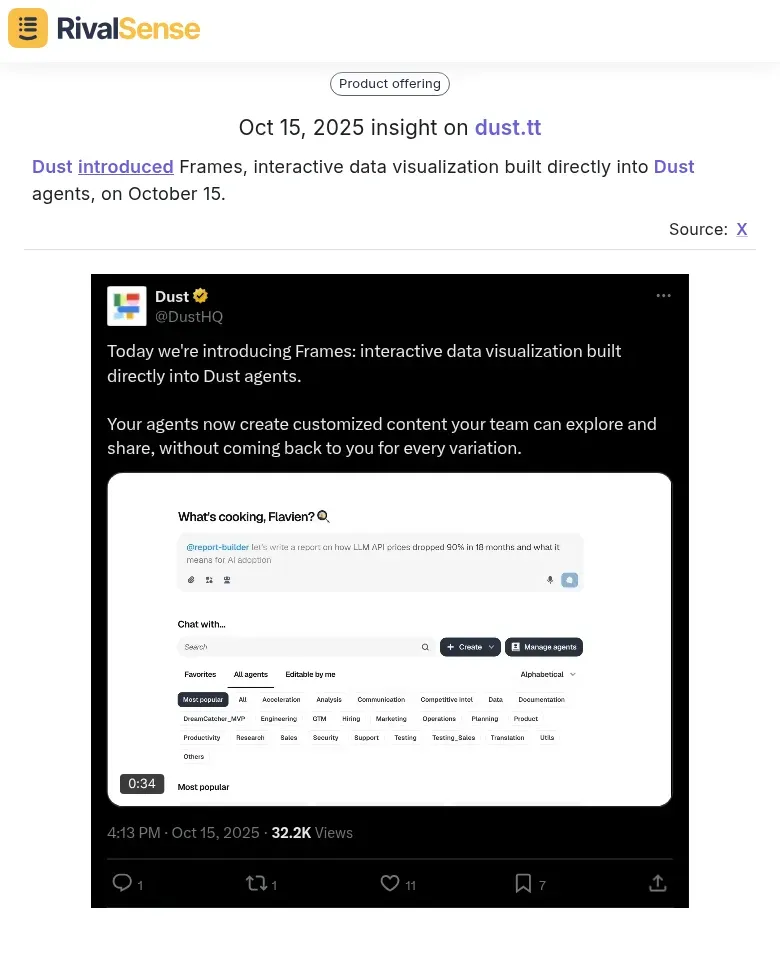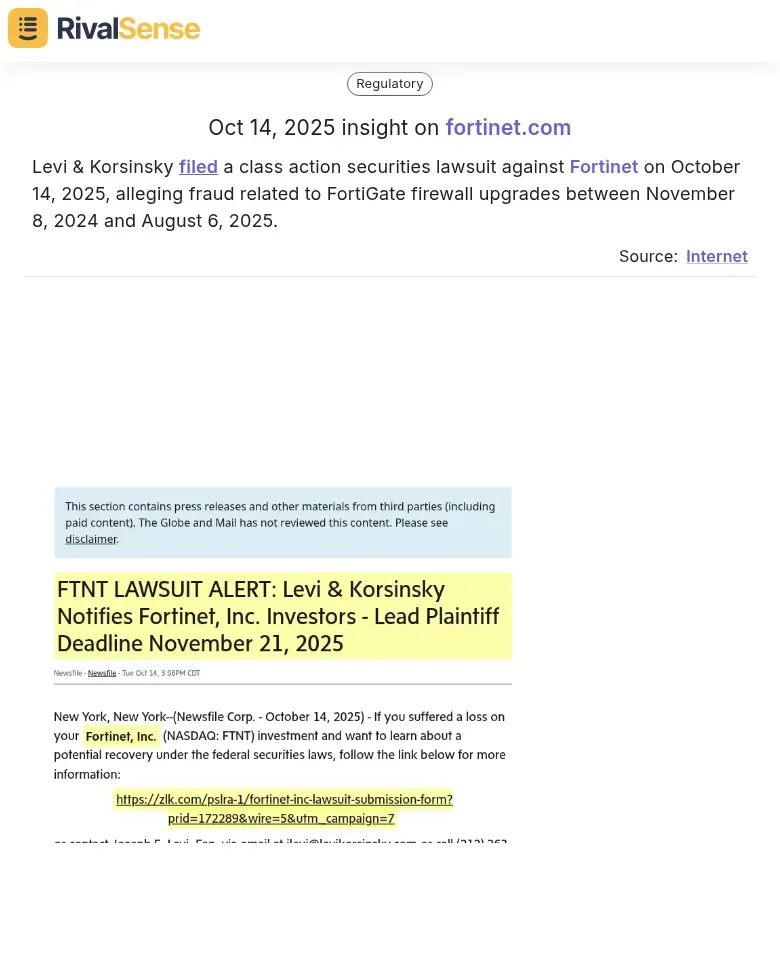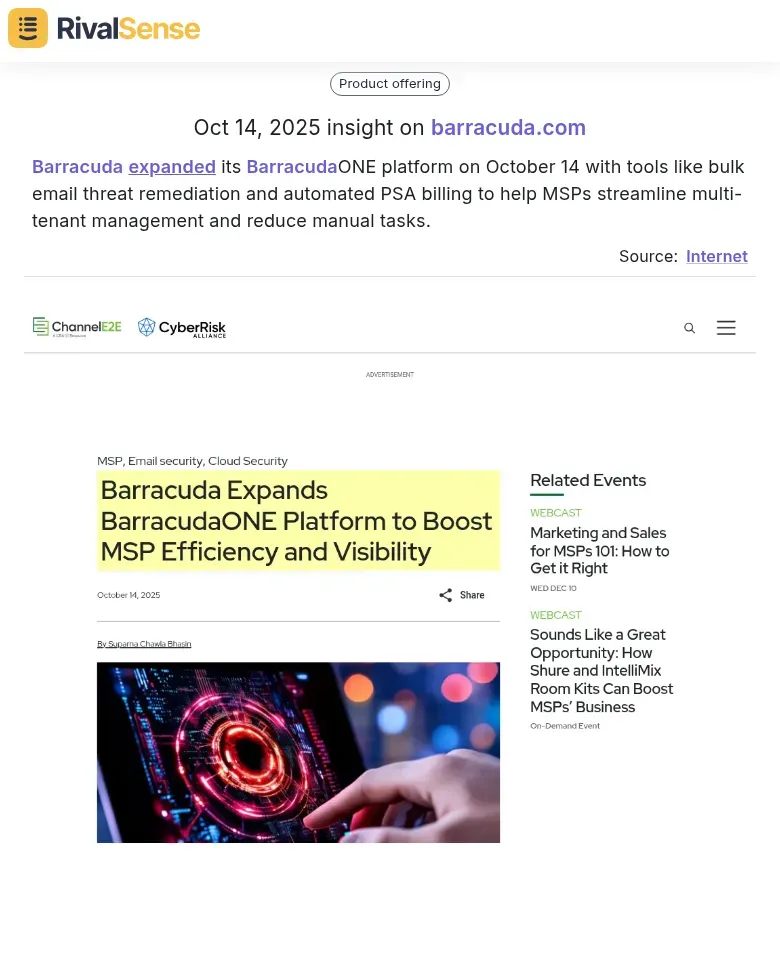Free Competitor Analysis Tools: The Ultimate Guide to Staying Ahead in 2025
As more businesses launch and expand each year, competition is perpetually increasing. Simply having a good product or service doesn't cut it anymore—you need a rock-solid differentiation strategy to stand out. And that's where competitor analysis comes in, providing the insights to outmaneuver rivals and capture market share.
Take our own example. For years, WordStream has owned the #1 spot for "keyword research," driving an estimated 99,000 monthly visits. Through competitor analysis, I discovered that WordStream combined a free tool with educational content. We took that winning formula and improved on it: better functionality, clearer guides, and smoother user experience. The result? Our page now gets 143K clicks in 12 months—a 626% increase. That's the power of competitor analysis.
If you want similar results, you're in the right place. In this guide, we'll explore:
- What competitor analysis is
- Who benefits from this process
- How to use it for your business
- The best free competitor analysis tools available
Why Free Competitor Analysis Tools Are Essential
Understanding your competitive landscape is crucial for any business aiming to thrive in today's fast-paced market. Free tools make this accessible without straining your budget, allowing you to gather actionable intelligence efficiently. Competitor analysis helps you uncover gaps, spot threats, and build strategies that give you an edge, while market analysis provides a broader industry view—both are vital for informed decision-making.
Competitor analysis is the process of studying your rivals to see what they're doing well—and where they're falling short. You'll look at things like:
- Products and services
- Pricing
- Marketing and advertising
- Customer sentiment
- Brand positioning
Market analysis looks at your whole industry, while competitor analysis focuses only on the companies you're directly competing with. Together, they give you a clearer view of your landscape and help you identify opportunities for growth.
The Best Free Competitor Analysis Tools in 2025
Leveraging the right tools can save you time and provide deep insights into your competitors' moves. Here are some top free options that cater to different aspects of competitor tracking, from comprehensive monitoring to specific channel analytics.
1. RivalSense - Comprehensive Competitor Tracking
What it does: Tracks competitor product launches/updates, pricing updates, event participations, partnerships, regulatory aspects, management changes, and media mentions across company websites, social media, and various registries (80+ sources).
Why it's valuable: Delivers all insights in a weekly email report, saving you hours of manual research. Perfect for busy founders and CEOs who need to stay updated without constant monitoring.
Best for: B2B companies needing comprehensive competitor intelligence without the manual work.
2. Google Alerts - Basic Monitoring
What it does: Sends email notifications when your competitors are mentioned online.
Why it's valuable: Completely free and easy to set up. Great for basic brand monitoring.
Limitations: Limited to web mentions and lacks deeper analysis.
3. SimilarWeb - Traffic Insights
What it does: Provides estimated traffic data, referral sources, and audience insights.
Why it's valuable: Free version gives you a snapshot of competitor website performance.
Best for: Understanding competitor web traffic patterns.
4. Social Blade - Social Media Analytics
What it does: Tracks social media growth and engagement metrics.
Why it's valuable: Free insights into competitor social media performance.
Best for: Companies where social media is a key marketing channel.
Real-World Competitor Insights from RivalSense
Seeing actual competitor moves in action can highlight how these insights drive strategic decisions. RivalSense captures real-time data that helps businesses anticipate market shifts and refine their approaches. Here are some examples of recent insights and why they matter for your strategy.
Product Launch Insight: Dust Introduced Frames

Dust introduced Frames, interactive data visualization built directly into Dust agents, on October 15. Tracking product launches like this is valuable because it helps you stay ahead of innovation trends, identify feature gaps in your own offerings, and adjust your product roadmap to maintain competitiveness. 🚀
Regulatory Insight: Levi & Korsinsky Lawsuit Against Fortinet

Levi & Korsinsky filed a class action securities lawsuit against Fortinet on October 14, 2025, alleging fraud related to FortiGate firewall upgrades between November 8, 2024 and August 6, 2025. Monitoring regulatory and legal developments is crucial as it alerts you to potential risks in your industry, helps you avoid similar pitfalls, and can reveal opportunities to strengthen your compliance and trust with customers. ⚖️
Partnership and Platform Expansion Insight: Barracuda Expanded BarracudaONE

Barracuda expanded its BarracudaONE platform on October 14 with tools like bulk email threat remediation and automated PSA billing to help MSPs streamline multi-tenant management and reduce manual tasks. Insights into partnerships and platform expansions are valuable because they show how competitors are evolving to meet customer needs, allowing you to identify collaboration opportunities or enhance your own service integrations. 🤝
How to Conduct a Competitor Analysis in 8 Steps
A structured approach to competitor analysis ensures you cover all critical areas and turn data into actionable strategies. Begin by defining your goals—whether it's improving pricing, marketing, or customer experience—to focus your efforts effectively.
1. Identify and Categorize Your Competitors
To understand your competition, go beyond listing familiar names and zoom out to see the full market picture. This step helps you prioritize who to monitor and uncover both direct and indirect threats.
Practical Checklist:
- ✅ Search for terms like "[your industry] in [your location]"
- ✅ Check platforms like Reddit, Facebook groups, and review sites
- ✅ Use free tools like RivalSense for automated competitor discovery
- ✅ Categorize into direct and indirect competitors
Direct competitors: Offer the same service to the same audience
Indirect competitors: Offer a different service that targets a similar customer base
Pro tip: Use RivalSense's free competitor analysis tool for a quick snapshot of your top competitors and their recent activities.
2. Study Their Customer Segments
Understanding who your competitors target reveals their core audience and unmet needs in the market. This insight allows you to tailor your messaging and capture overlooked customer groups.
Practical Steps:
- Review their website headlines, product pages, and CTAs
- Identify who they're clearly speaking to
- Note who they're NOT targeting (this reveals opportunities)
- Use free tools like SparkToro for audience insights
Example: Cirque du Soleil targeted adults looking for premium experiences while traditional circuses focused on families with kids, creating a new category they owned.
3. Research Their Product or Service
Analyzing competitor offerings helps you identify strengths and weaknesses in their products, guiding your own development and positioning. Focus on what they emphasize and how they deliver value to customers.
Checklist:
- ✅ Which products/services are featured most?
- ✅ What outcomes or benefits do they emphasize?
- ✅ Examine website navigation and product pages
- ✅ Note their positioning (innovation, price, simplicity, etc.)
Example: Warby Parker's free home try-on program removed friction and helped them stand out in the eyewear market.
4. Observe Their Pricing Strategy
Pricing reflects a company's value proposition and target market, making it a key area for competitive analysis. By understanding their models, you can optimize your own pricing to attract more customers.
Questions to Ask:
- What pricing model do they use (freemium, flat rate, tiered)?
- Do they offer bundles, subscriptions, or add-ons?
- Are they positioned as budget-friendly or premium?
- How transparent are they about pricing?
Example: Dollar Shave Club's $1/month subscription simplified the offer and eliminated decision fatigue.
Pro tip: Check pricing pages in incognito mode or from a mobile device, as some brands test different offers based on device or location.
5. Analyze Their Marketing Strategy
Marketing efforts reveal where competitors invest resources and how they communicate with audiences. This analysis helps you identify effective channels and messaging to refine your own campaigns.
Practical Analysis:
- Scan their website, search results, and social profiles
- Identify main channels (organic search, paid, social, etc.)
- Break down their messaging and strategy
- Use free SEO tools to see ranking keywords
Tools to Use: Google Search Console (free), Google Trends (free), RivalSense for automated marketing activity tracking
6. Map Out Their Customer Journey
Experiencing the competitor's process firsthand uncovers friction points and smooth experiences you can learn from. This step ensures you design a customer journey that outperforms theirs.
Steps to Follow:
- Click on their ads
- Browse their homepage
- Sign up for their email list
- Try to make a purchase
- Note friction points and smooth experiences
Example: White Stuff improved their checkout process after competitor analysis, resulting in a 37% boost in conversions.
7. Learn What Their Customers Are Saying
Customer feedback provides raw insights into what users value and where competitors fall short, guiding your improvements and differentiators. Leverage public channels to gather honest opinions.
Where to Look:
- Public reviews (G2, Trustpilot, Amazon)
- Social channels (Reddit, X, LinkedIn)
- Industry-specific directories
Pro Tip: Andy McCotter-Bicknell from Apollo.io suggests: "Message competitors' customers on LinkedIn or email asking for info. Be transparent about who you are, and you'll be surprised how willing people are to share thoughts."
8. Categorize Your Findings Using SWOT Analysis
Organizing insights into a SWOT framework clarifies your position and highlights actionable areas. This summary turns data into a strategic plan for growth and risk mitigation.
Strengths: Where do you win? (e.g., brand loyalty, customer satisfaction)
Weaknesses: What's slowing you down? (e.g., inventory issues, weak positioning)
Opportunities: What trends or unmet needs can you exploit?
Threats: What risks could undermine you?
Pro tip: Don't overthink it. Focus on 3-5 items in each category and ensure they're honest assessments.
Turning Insights into Action
Once you've mapped your SWOT, it's time to translate insights into measurable actions that drive results. A focused 90-day plan ensures you implement changes quickly and adapt based on performance.
Action Steps:
- 🎯 Pick 2-3 plays with clear upside
- 👥 Assign ownership and deadlines
- 📈 Define what success looks like
- 🚀 Start small, then scale what works
Example: Domino's used SWOT analysis to identify weaknesses in their menu and opportunities in digital ordering, resulting in 7.3% global sales growth after acting fast.
The Power of Continuous Monitoring
Competitive landscapes evolve rapidly, making ongoing monitoring essential for staying agile and proactive. Regular updates help you spot shifts early, capitalize on new opportunities, and avoid surprises from competitor moves.
Why Continuous Monitoring Matters:
- Spot shifts early
- Stay ahead of market changes
- Identify new opportunities quickly
- Avoid being blindsided by competitor moves
Tools for Ongoing Monitoring:
- RivalSense (automated weekly reports)
- Google Alerts (basic mention tracking)
- Social media monitoring tools
- Industry news feeds
Free Competitor Analysis Tools Comparison
| Tool | Best For | Key Features | Limitations |
|---|---|---|---|
| RivalSense | Comprehensive tracking | 80+ sources, weekly email reports | Limited free tier |
| Google Alerts | Basic monitoring | Free, easy setup | Limited to web mentions |
| SimilarWeb | Traffic insights | Estimated traffic data | Limited data in free version |
| Social Blade | Social media analytics | Free social metrics | Basic insights only |
Getting Started with Your Competitor Analysis
Jumpstarting your competitor analysis doesn't have to be overwhelming—begin with simple steps to build momentum. Consistency is key, so set up a routine that fits your schedule and focuses on high-impact actions.
- Choose Your Tools: Start with 2-3 free tools that match your needs
- Set Up Monitoring: Configure alerts and tracking for key competitors
- Schedule Regular Reviews: Block time monthly for analysis
- Document Findings: Use a simple spreadsheet to track insights
- Take Action: Implement at least one improvement based on your findings
The Bottom Line
Free competitor analysis tools have made it easier than ever to understand your competitive landscape and make data-driven decisions. While manual research has its place, automated tools like RivalSense save time and provide comprehensive insights that keep you ahead of the curve.
Remember: The goal isn't just to collect data—it's to turn insights into action that drives your business forward. Competitor analysis isn't about copying others; it's about understanding the landscape to build a better, more differentiated business.
Next Steps:
- Try out RivalSense for free (https://rivalsense.co/) to automate your competitor tracking and get your first report today.
- Set up Google Alerts for your top 3 competitors
- Schedule your first monthly competitor review session
- Identify one immediate action you can take based on competitor insights
Start small, be consistent, and watch your competitive advantage grow. 🚀
📚 Read more
👉 How Media Buying Agencies Win with Competitor Customer Service Insights
👉 How Merchize's $2.5 Flash Card Launch Fueled Competitor Growth
👉 Case Study: Website Changes Reveal Competitor Market Research
👉 Best Practices for Beauty Retail Key Account Health Dashboards
👉 Actionable Guide to Regulatory Competitor Insights for Key Accounts
